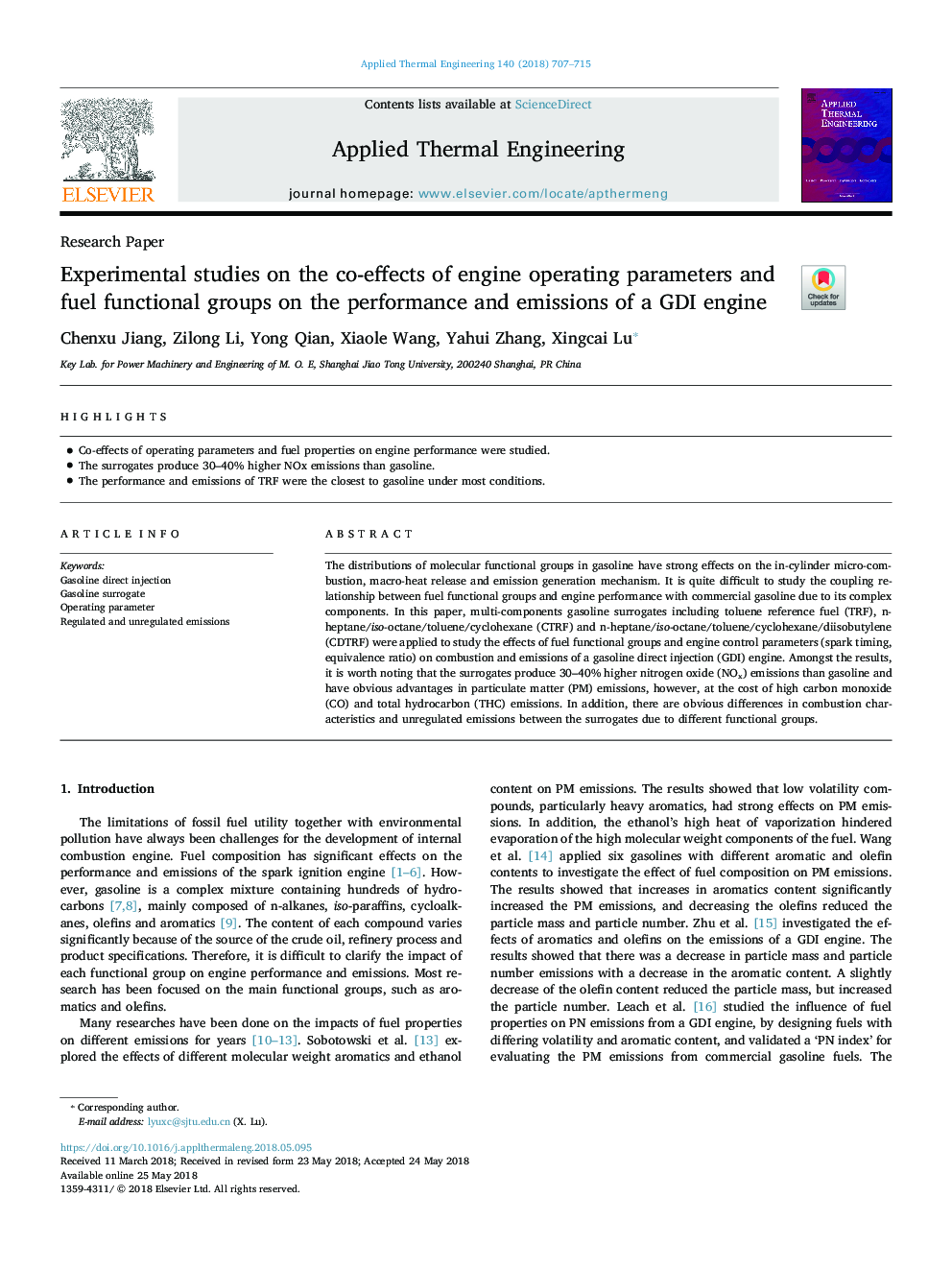| Article ID | Journal | Published Year | Pages | File Type |
|---|---|---|---|---|
| 7045171 | Applied Thermal Engineering | 2018 | 9 Pages |
Abstract
The distributions of molecular functional groups in gasoline have strong effects on the in-cylinder micro-combustion, macro-heat release and emission generation mechanism. It is quite difficult to study the coupling relationship between fuel functional groups and engine performance with commercial gasoline due to its complex components. In this paper, multi-components gasoline surrogates including toluene reference fuel (TRF), n-heptane/iso-octane/toluene/cyclohexane (CTRF) and n-heptane/iso-octane/toluene/cyclohexane/diisobutylene (CDTRF) were applied to study the effects of fuel functional groups and engine control parameters (spark timing, equivalence ratio) on combustion and emissions of a gasoline direct injection (GDI) engine. Amongst the results, it is worth noting that the surrogates produce 30-40% higher nitrogen oxide (NOx) emissions than gasoline and have obvious advantages in particulate matter (PM) emissions, however, at the cost of high carbon monoxide (CO) and total hydrocarbon (THC) emissions. In addition, there are obvious differences in combustion characteristics and unregulated emissions between the surrogates due to different functional groups.
Related Topics
Physical Sciences and Engineering
Chemical Engineering
Fluid Flow and Transfer Processes
Authors
Chenxu Jiang, Zilong Li, Yong Qian, Xiaole Wang, Yahui Zhang, Xingcai Lu,
